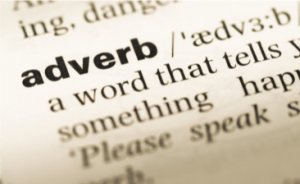By Sarah Ondriezek
You’ve made it to grad school – currently enrolled in Chatham’s MPW program, you may be wondering what’s next for you. How does your degree translate to a career in writing? What if you don’t want a traditional 9:00 AM-5:00 PM office job? Perhaps you’ve heard about freelance writing as a side-hustle for writers who’ve had little success nabbing a full-time writing gig. The internet is full of tips for freelance writing – but information about how to get started can be vague and confusing. Whether you want to try your hand at part-time freelancing work, or your goal is to make it as a full-time freelancer, use these tips to get started.
Promote your work – Dazzle potential clients with your writing by posting your work on your website, blog, or portfolio site. While other freelancers prefer to use only one of these platforms, using all three simultaneously maximizes exposure. Even the least tech-savvy writer can use a platform like Wix to build a sleek website to showcase their brand. I recommend the following when building a website:
- Include a portfolio of your work (published & unpublished)
- Link to your professional social media accounts (and advertise your writing there too!)
- Embed your blog
- Don’t forget a short bio
 Find a niche – Where does your writing shine? What genre of writing excites you? What is your passion? While this will be up to you to decide, it’s important to choose your niche and write in it exclusively. Doing so sets you up to become a leading writer in your field, which only fuels more job opportunities and an increase in your pay rate.
Find a niche – Where does your writing shine? What genre of writing excites you? What is your passion? While this will be up to you to decide, it’s important to choose your niche and write in it exclusively. Doing so sets you up to become a leading writer in your field, which only fuels more job opportunities and an increase in your pay rate.
Look for Jobs – You have a platform, a brand, and have a following on social media. How do you find work? Would you believe me if I told you that this is the easy part? Start your job search on sites like Upwork, Flexjobs, ProBlogger, and LinkedIn Jobs. Post your resume on sites like ZipRecuiter, or advertise your freelance writing services on a job board in your area. Once you’ve successfully nailed your first few jobs, you can use these connections to find more jobs (and increase your rate!). Keep in mind that being able to write well is a rare skill – jobs will begin seeking you out once you’ve proven your expertise.
Pitch often – Did you know that HuffPost, Buzzfeed, Vice, and The Atlantic rely on freelance writers for their content? Do you have an Op-Ed, investigative, profile, or other journalistic-type ideas for an article? Pitch it! Plenty of newspapers and journals are looking for relevant stories and articles for their publications – and the pay is often pretty good. Be sure to link to your website when pitching an article as it gives the editor a sense of your writing style!
 Learn SEO skills— In addition to perfecting your craft, you will also need to master working with SEO (search engine optimization). You may have just written the perfect article for The Atlantic, but you need to make sure that readers can find it! Companies want their writers to have the SEO skills to drive traffic to their site – learning it and using it is a must. I have two tips for learning and practicing your SEO skills:
Learn SEO skills— In addition to perfecting your craft, you will also need to master working with SEO (search engine optimization). You may have just written the perfect article for The Atlantic, but you need to make sure that readers can find it! Companies want their writers to have the SEO skills to drive traffic to their site – learning it and using it is a must. I have two tips for learning and practicing your SEO skills:
- Take a (free) online course to learn SEO (LinkedIn has a great one)
- Use SEO to tag articles in your blog and on your website for practical experience





 2.
2. 





